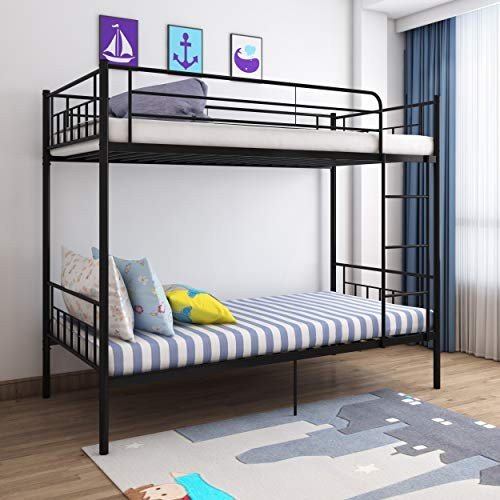20 Things You Should Ask About Bunk Bed For Kids Before Purchasing It
The Ultimate Guide to Bunk Beds for Kids: Safety, Styles, and Solutions
Bunk beds have long been a popular option among parents looking for to optimize space in their children's bedrooms. With benefits that go beyond their compact style, bunk beds offer an enjoyable and functional sleeping plan while encouraging brother or sister bonding and fostering imagination. In this thorough guide, we explore various elements of bunk beds for kids, consisting of security factors to consider, various styles available, and suggestions for choosing the right one for your household.
Why Choose Bunk Beds?
Bunk beds are designed to stack one bed on top of another, utilizing vertical space to produce more space for play and storage. They are especially helpful for households with several children or limited bed room space. Furthermore, they supply a daring sleeping environment that kids often enjoy.
Key Advantages of Bunk Beds:
- Space-saving design: Ideal for small spaces or shared spaces.
- Cost-effective: Often more affordable than buying two different beds.
- Motivates social interaction: Promotes bonding among brother or sisters or good friends.
- Versatile options: Available in different styles and configurations to suit any space design.
Security First: Essential Considerations
When picking a bunk bed for kids, safety should be the top concern. The following functions are crucial for making sure a secure sleeping environment:
Important Safety Features:
- Sturdy Construction: Ensure that the bed frame is made of durable materials such as strong wood or metal.
- Guardrails: Bunk beds need to have guardrails on both sides of the upper bunk to prevent falls.
- Ladder Safety: A sturdy, built-in ladder or stairs with anti-slip rungs is important for safe access to the leading bunk.
- Weight Limit: Check the manufacturer's weight limit capability for both the leading and bottom bunk.
- Mattress Size: Use the proper bed mattress size as specified by the bed manufacturer to make sure a tight fit within the bed frame.
Security Tips for Parents:
- Monitor Sleep Habits: Teach children the significance of not playing on or leaping off the bunk beds.
- Age Appropriateness: Generally, the upper bunk appropriates for kids aged 6 and older.
- Routine Inspections: Periodically examine for any loose bolts, screws, or structural damage.
Designs of Bunk Beds
Bunk beds are available in a variety of styles, enabling parents to select one that complements their child's room decor while meeting specific requirements. Below are some popular styles:
Popular Bunk Bed Styles:
- Traditional Bunk Beds: Simple and classic designs made of wood or metal without any extra features.
- Loft Beds: Features a raised leading bunk with space underneath for a desk, play location, or extra storage.
- L-Shaped Bunk Beds: Arranged in an L-shape, often perfect for corner areas and can have extra storage choices.
- Twin over Full Bunk Beds: A twin bed on the top and a bigger full-sized bed on the bottom, accommodating children or teens of various ages.
- Triple Bunk Beds: Designed to fit 3 beds in a single footprint, ideal for bigger households or pajama parties.
A Comparison of Bunk Bed Styles
Bunk Bed Style
Description
Best For
Traditional
Timeless style with two stacked beds
Requirement bed room setups
Loft Bed
Raised bed with functional space beneath
Research or play locations
L-Shaped
Bunk beds organized in an L-shape
Corner areas
Twin over Full
Twin bed on top, full bed below
Different age siblings
Triple Bunk
3 stacked beds
Large families or slumber parties
Selecting the Right Bunk Bed
When looking for the ideal bunk bed, think about the list below factors to guarantee you make an informed choice:
Key Factors to Consider:
- Room Size: Measure the room dimensions to determine the appropriate size and height of the bunk bed.
- Child's Age: Consider the age of your child(ren) when picking a design and safety functions.
- Performance: Think about how much storage or play space you need and whether the bunk bed need to serve extra functions.
- Spending plan: Set a budget that consists of not just the bunk bed but likewise the required bed mattress and accessories like bed linen or security gates.
FAQs About Bunk Beds for Kids
1. What age is appropriate for a child to sleep in the top bunk?
Normally, children aged 6 and older should have the ability to securely sleep in the top bunk, though you should constantly consider your kid's maturity level.
2. Are bunk beds safe for toddlers?
It is not a good idea for toddlers or really young kids to oversleep the leading bunk due to the danger of falling.
3. How do I maintain the bunk bed?
Inspect the bed routinely for any indications of wear and tear, tightening up screws, and cleaning the bed mattress to guarantee extended safety and sturdiness.
4. Can Tequila Schmiesing transform a bunk bed into 2 separate beds?
Numerous bunk beds are created to be convertible, allowing you to separate the beds when required. Examine the producer's requirements before buying.
5. How can I make the most of space in a bunk bed space?
Use under-bed drawers, shelves, or lofted styles to create extra storage options in a space with a bunk bed.
Bunk beds provide a wonderful mix of fun, functionality, and space-saving energy, making them an ideal option for young households. By considering security features, numerous designs, and practical factors such as space size and age appropriateness, parents can pick the perfect bunk bed for their child's needs. With the right choice, bunk beds can change a bed room into a magical space that encourages play, creativity, and bonding amongst brother or sisters. Always keep in mind to prioritize security and maintenance to make the most of this special sleeping plan.
